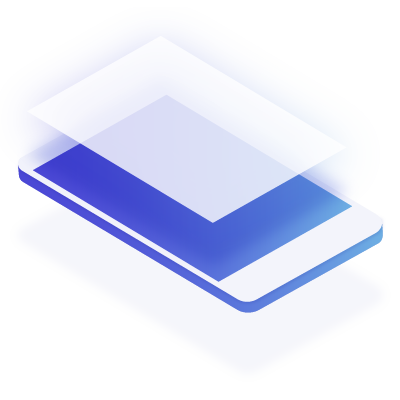Software specifications
Altcode is a highly esteemed organization renowned for their profound proficiency in the domain of software specifications composition. Collaborating closely with their clientele, they adeptly mold project requisites, guaranteeing lucidity and reducing exorbitant mistakes. Their unwavering focus on change management fosters transparent correspondence among stakeholders, rendering them an invaluable resource in intricate software ventures.

Benefits
Benefits of Software specifications

Clarification of Objectives
Writing of software specifications is akin to crafting a meticulous blueprint for a project, fostering a comprehensive comprehension of the tasks at hand and the most effective strategies to accomplish them. Through this methodical approach, any potential ambiguities or discord within the team and other stakeholders are mitigated, enabling seamless collaboration and aligning expectations for enhanced productivity.

Error Reduction
Software specifications play a crucial role in preemptively identifying and rectifying errors or conceptual deficiencies prior to the commencement of the development phase. This strategic approach effectively mitigates the need for expensive course corrections and substantial revisions upon completion of the code, thereby conserving valuable time, and resources, and ultimately enhancing the overall caliber of the end product.

Guidance for Development
Software specifications play a pivotal role in providing a comprehensive roadmap for the development team. By outlining the exact functionalities to be incorporated, technical limitations to be considered, and the intricate connections between various software components, it expedites the development process, fosters uniformity, and simplifies project administration.

Effective Communication
Software specifications function as a centralized point of reference for all individuals involved in a project. They facilitate effective and uniform communication between team members involved in development, project management, testing, and client engagement. This continuous exchange of information promotes enhanced collaboration, prompt resolution of issues, and ultimately, heightened client contentment.
Vidéo
Guide line to Software specifications
STEPS
4-step approach

Step 1
Define the Functional Scope
At this initial stage, you should clearly define the functional scope of your project. This means determining what features and processes will be included in the software you develop. To do this you should:
- Confer with stakeholders to discern and articulate the objectives and prerequisites of the project.
- Ascertain the indispensable characteristics necessary to attain these objectives.
- Delimit the software’s inclusions and exclusions with unequivocal boundaries to prevent the occurrence of scope creep.
Step 2
Create a Hierarchy
Once the functional scope is defined, it is time to organize this information by creating a hierarchy or tree-like structure of functions. This step includes:
- Arranging functionalities in a logical manner enhances comprehension and facilitates efficient management.
- Categorizing associated functionalities and organizing them into modules.
- Establishing a hierarchical framework to illustrate the interconnections between various functionalities.


Step 3
Set Priorities
Not all features possess equal levels of significance. During this stage, it is vital to assign a priority level to each feature. This will aid in identifying which features should be prioritized for development, taking into account their importance to users or project objectives. Criteria such as their impact on user experience, complexity of implementation, or constraints related to time and budget can be utilized to establish these priorities.
Step 4
Write the Functional part of your Specifications
This step involves writing detailed functional specifications. For each function or group of functions, you must:
- Specify the necessary inputs (data provided) that activate the functionality and the anticipated outputs (outcomes).
- Establish any particular circumstances or limitations that pertain to the functionality.
- Offer tangible illustrations to demonstrate the functionality’s operation.
- Present a comprehensive explanation of the intended purpose of the functionality, with emphasis on the anticipated results and user engagements.
- Describe potential scenarios and instances of use that are associated with the functionality, if applicable.

Qualities of our solutions
Benefits of our software solutions

Friendly and responsive UX

Easily configurable

Quality customer support

Modern web technologies

Corrective and evolutionary maintenance

Custom roles and permissions

Full documentation

Integrated analytics and reporting tools

“Talented consultants and development experts”
Guillaume L. – IT Director at Rouge Editions

“Quality digital services, respect of deadlines and affordable prices”
Emilie B. – Marketing Manager

“Team that helped us write specifications and move forward in the development of our project”
Nina M. – Account Manager
Functional analysis approach
Software specifications and functional analysis
Software Requirements Specifications (SRS) and functional analysis are two essential aspects of successful software development. Functional analysis focuses on an in-depth understanding of customer and end-user needs, as well as business processes. It aims to translate these needs into a clear vision of the required functionalities. SRS use this insight to create detailed documents that explain how the software should meet these needs. SRS provide specific details about functionality, technical constraints, and interactions between systems. This close collaboration ensures that the software developed precisely meets functional and technical requirements while being aligned with business objectives. Functional analysis identifies the “what” and “why,” while SRS details the “how.” Together, they ensure transparent communication between stakeholders and guide the development team.
Customer cases
Discover examples of customer projects
Projects where customers have called on us for functional analysis, drafting of specifications and specifications, design of screen models and functional support for development teams (PO Product Owner )

Need advice?
With Altcode Solutions, you have the possibility to move forward on your software project with a single developer or with a dedicated team. Our flexible offerings make it easy for projects to start, scale, and end – As needed.








